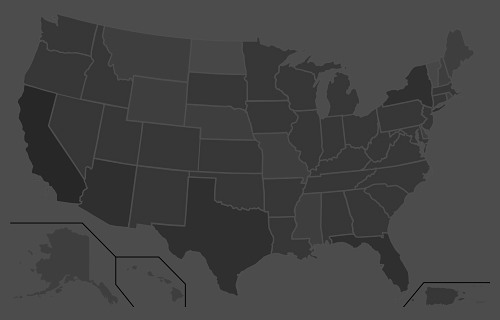“Our added winter moisture and active calling period led to a very long nesting and hatching season, starting in late April and extending into early summer, with chicks hatching as late as early July,” O’Dell said. “From a population standpoint, we are out of a deficit for the first time since 2001-2002. Quail are starting to pop up in places they haven’t been seen in a while.
“If you’ve never had the chance to experience what Arizona quail hunting built its name on, then this would be the year to get out and enjoy it.”
Meanwhile, hunters should note that the season for Mearns’ quail doesn’t begin until Dec. 4. It’s summer rainfall that plays a key role in nesting success and population numbers of this species. After a spotty and relatively weak monsoon across southern Arizona, these birds are likely to be abundant only in pockets that received sufficient precipitation this summer.
A valid Arizona hunting or combination hunt and fish license is required for all hunters 10 and older. Those hunters under 10 must either have a valid hunting or combination hunt and fish license, or be accompanied by an adult who possesses a valid hunting or combination hunt and fish license. Licenses can be purchased online or at license dealers statewide. A youth combination hunt and fish license (ages 10 to 17) is $5.
The general bag limit is 15 quail per day in the aggregate, of which no more than eight may be Mearns’ quail (when the Mearns’ season opens Dec. 4). The general possession limit is 45 quail in the aggregate after opening day, of which no more than 15 Gambel’s, scaled or California quail in the aggregate may be taken in any one day. After the opening of the Mearns’ season, the 45-quail possession limit may include 24 Mearns’ quail, of which no more than eight may be taken in any one day.
More quail-hunting information can be found on the department’s website at https://www.azgfd.com/Hunting/. Another resource for both new and experienced hunters alike is “An Introduction to Hunting Arizona’s Small Game.” Written by Randall D. Babb, the 196-page, full-color book covers where and how to hunt small game birds (like quail), squirrels, rabbits, ducks and geese. It also includes how to prepare and cook your harvest, with illustrations and recipes. The book can be ordered for $16.95 at www.azgfd.gov/publications.
Finally, hunters should check out O’Dell’s techniques for field-dressing quail at https://www.youtube.com/watch?v=3gRwZAcWzzk.
####
Publishers Notes: OUT OF STATE HUNTERS, FISHERMEN & OUTDOOR ENTHUSIASTS; Due to the Covid 19 pandemic, there could be limitations for OUT of STATE hunters, fishermen and other outdoor enthusiasts to include a 14-day quarantine requirement or negative COVID-19 testing alternative. Please check with the State's Department of Natural Resources BEFORE you travel or apply for the 2020 Fall Hunts.
Disclaimer: The views expressed on this site are that of the authors and not necessarily that of TBC Press
Florida 2021 Spring Turkey Season Opens March 6 -- Information to Know
Submitted by: TBC Press
Posted on: 02/03/21
The Backcountry Press
The country's premier daily HUNTING, FISHING & OUTDOOR news in the USA and around the globe. Read whats happening in your neck of the woods & beyond.
© 2020 TBC Press - All Rights Reserved Website Design by:
News # 14197
Florida Fish and Wildlife Conservation Commission (FWC) recently launched a new map that shows the predicted quality of habitat – good, fair or poor – based on the location, amount and arrangement of habitat needed throughout a wild turkey’s home range and life cycle.
This new information, based on a model developed for Virginia and adapted for Florida, is a powerful management tool. It allows FWC biologists to assess habitat suitability at the level of the wild turkey’s home range. This habitat assessment, combined with wild turkey sightings reported by the public during the 2020 Wild Turkey Summer Survey, enabled biologists to predict the distribution of wild turkeys across the state. This information is vital for helping FWC wild turkey biologists meet conservation objectives and provide sustainable hunting opportunities.
This new map is also valuable for wild turkey hunters who want more information about where they hunt or plan to hunt. You can drill down to an area smaller than two basketball courts to get a better understanding of habitat quality and the likelihood of wild turkeys occurring in a particular area. Because the habitat suitability model is unable to determine the condition of the understory, that layer of shrubs and small trees beneath the main forest canopy, the prediction may not be accurate in all areas, especially at smaller scales.
Find this new map at MyFWC.com/Turkey and click on “Wild Turkey Distribution Map.”
Turkey Hunting on Wildlife Management Areas
Many WMAs offering spring turkey hunting require a quota permit. However, there are WMAs that do not require a quota permit. You can find a list of WMAs that offer no quota permit spring turkey hunting by heading over to MyFWC.com/Turkey and clicking on “2021 Spring Turkey Hunt Guide.” You also can use the FWC’s online WMA Finder to locate public hunting opportunities. Use the various filters at WMA finder to search for areas based on species, season, location and more. Get started using WMA Finder by visiting MyFWC.com/WMABrochures.
We always recommend that before heading afield, you carefully review the WMA regulations brochure for the area you want to hunt because season dates and other rules may vary from statewide seasons and other WMAs. Also, before visiting a WMA, always check the area’s open/closed status to determine its availability to public access and if there are any road closures or updates about check stations or entrances. You can find this information by visiting MyFWC.com and clicking on the red button “WMA Open/Closed Status.”
Wild Turkey Season Regulations
For information about bag limits, methods of take, license and permit requirements and other regulations, visit MyFWC.com/Turkey and click on “2021 Spring Turkey Hunt Guide.”
Osceola and Eastern Wild Turkey
Florida has two subspecies of wild turkey — the eastern wild turkey and the Osceola or Florida wild turkey. The only place in the world the Osceola occurs is the Florida peninsula! Hunters interested in qualifying for the FWC or National Wild Turkey Federation’s respective wild turkey registry programs need to know the range of each subspecies. Any wild turkey harvested within or south of the counties of Dixie, Gilchrist, Alachua, Union, Bradford, Clay and Duval is considered to be an Osceola subspecies. See an Eastern/Osceola range map by visiting MyFWC.com/Turkey and clicking on “2021 Spring Turkey Hunt Guide.”
Wild Turkey Registry
If you harvest a wild turkey with an 11-inch beard or longer and spurs measuring at least 1.25 inches, you can apply for an “Outstanding Gobbler Certificate” and have your name listed in FWC’s Wild Turkey Registry.
Also, hunters under the age of 16 who have harvested their first gobbler can receive a "First Gobbler Certificate," regardless of beard or spur measurements. Learn more about FWC's Wild Turkey Registry by heading over to MyFWC.com/Turkey and clicking on “Wild Turkey Registry.”
Before heading afield, don’t forget to brush up on turkey hunting safety. Visit MyFWC.com/Turkey and click on “Tips for Safe and Successful Turkey Hunting.” Visit MyFWC.com for more information and HOW TO HUNT Florida wild turkey.
####
Publishers Notes: Our country is still battling COVID-19. To avoid the spread of this virus and continue to enjoy outdoor activities, ALL outdoor enthusiasts (man, woman, child) should follow the guidelines set by nps.gov. These guidelines include; social distancing, the Leave No Trace principles, including pack-in and pack-out, to keep outdoor spaces safe and healthy.
Florida 2021 spring turkey season south of State Road 70 opens March 6 and runs through April 11 on lands outside of the wildlife management area system. North of State Road 70, the season opens March 20 and runs through April 25.
Youth Turkey Hunt Weekends
If you’d like to take a youth turkey hunting, the FWC offers two Youth Spring Turkey Hunt Weekends: Feb. 27-28, south of State Road 70, and March 13-14, north of State Road 70. These Saturday-Sunday hunts are available to youth 15 years old and younger and occur on many WMAs and lands outside of the WMA system.
Learn more about this youth hunting opportunity and find a list of WMAs where a quota permit is not required at MyFWC.com/Turkey and click on “Youth Turkey Hunt Weekends.”












